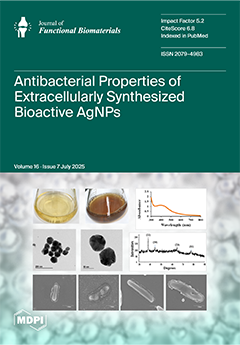Aim: hydraulic calcium silicate-based cements (HCSCs) are widely used in endodontics for vital pulp therapy and other clinical procedures due to their favorable physicochemical and biological properties. This study evaluates the biological properties of two HCSCs—MTA Flow™ and MTA Flow™ White (in a 3:2 liquid-to-powder ratio, thick consistency)—on human dental pulp stem cells (hDPSCs). Methodology: hDPSCs were exposed to leachates from MTA Flow™, MTA Flow™ White, and ProRoot
® MTA. pH changes, cytotoxicity, cell proliferation, cell morphology, and cell death (apoptosis/necrosis) were assessed in vitro. Results: MTA Flow™ White and ProRoot
® MTA leachates produced a strongly alkaline pH (~10–12) compared to the negative control, whereas MTA Flow™ leachate caused a smaller pH increase (~9.4). Freshly mixed cements showed moderate cytotoxicity (around 40–60% cell viability at 100% concentration), while hardened cement leachates did not significantly affect cell viability. At 100% concentration, MTA Flow™ and MTA Flow™ White leachates significantly inhibited hDPSC proliferation and caused cell death, but at lower concentrations (≤50%) they supported cell viability and proliferation comparable to ProRoot
® MTA. hDPSCs exposed to MTA Flow™ and MTA Flow™ White leachates appeared more elongated morphologically than those exposed to ProRoot
® MTA. Notably, cells treated with MTA Flow™ White leachates were significantly smaller than those treated with MTA Flow™. Conclusions: MTA Flow™ and MTA Flow™ White, used in 3:2 thick consistency, demonstrated biocompatibility comparable to ProRoot
® MTA in vitro. While 100% leachates showed moderate cytotoxicity, lower concentration dilutions (≤50%) supported hDPSC viability, proliferation, and morphology. These findings support their potential as safe alternatives for vital pulp therapy. Further in vivo studies and dynamic models are needed to confirm long-term biological performance.
Full article






